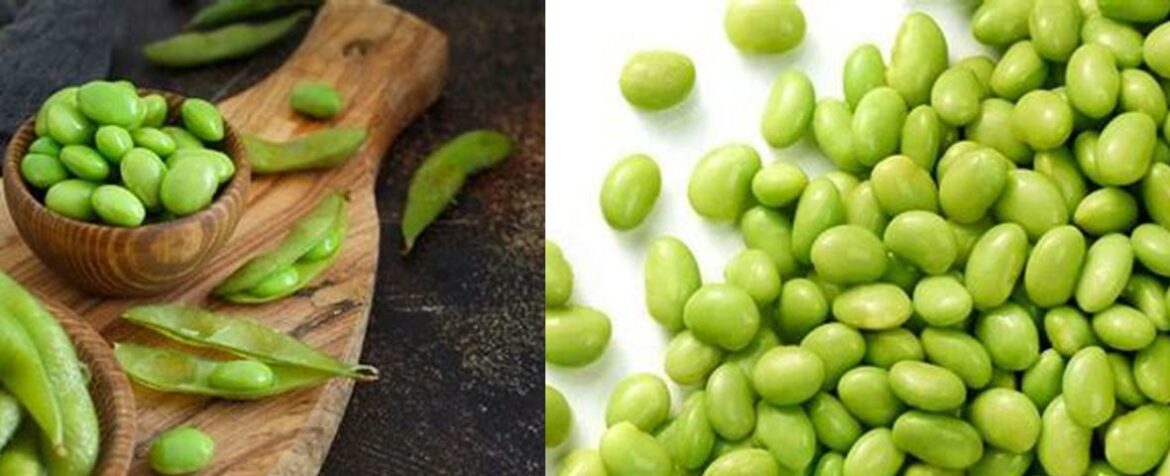Mukimame Vs Edamame – Mukimame vs. Edamame: A Culinary Discovery of Soybean Delights
Are you ready to embark on a soybean adventure? Get ready to uncover the delicious world of Mukimame and Edamame! These two soybean varieties may sound similar, but they have their own unique flavors and culinary uses. Whether you’re a seasoned foodie or just curious about expanding your palate, this blog post is here to guide you through the differences and similarities of Mukimame and Edamame. So, grab a snack and let’s dive into the soybean showdown!
Mukimame vs. Edamame: A Culinary Discovery of Soybean Delights
Mukimame and Edamame, two intriguing soybean varieties, grace the culinary world with their distinct flavors and textures. These green gems, often mistaken for one another, offer a delightful dance of tastes and culinary versatility. Let’s dive into the depths of their differences and explore the unique joys each brings to our plates.
1. The Tale of Two Soybeans: Harvesting and Maturation
The journey of Mukimame and Edamame begins in the fields, where the soybean plants bask in the sun’s warmth. Edamame, the more mature of the two, is harvested while still young and vibrant, its pods bursting with tender, green beans. Mukimame, on the other hand, is granted more time to mature on the vine, developing a rich, nutty flavor and a distinct yellow-green hue.
2. A Symphony of Colors and Textures: Unveiling Visual and Tactile Delights
Edamame proudly displays its vibrant green pods, a visual testament to its youthful harvest. Inside, the plump beans boast a firm exterior and a creamy, velvety interior, inviting both the eyes and the palate to indulge. Mukimame, meanwhile, exhibits a more subdued green-yellowish hue, hinting at its longer maturation process. Its texture is a delightful interplay of crunch and softness, offering a satisfying bite that lingers.
3. Culinary Canvas: Edamame and Mukimame’s Culinary Adventures
Edamame’s versatility shines through its culinary adaptability. Whether boiled, steamed, or microwaved, its mild, refreshing flavor complements various dishes. As a standalone snack or appetizer, Edamame pods offer a satisfying crunch and a burst of vegetal sweetness. It also harmonizes beautifully in salads, stir-fries, and even soups, adding a pop of color and a boost of nutrients.
Mukimame, with its sweeter, nuttier profile, carves out its own culinary niche. Often cooked longer to achieve a softer texture, it can be served as a side dish or incorporated into stir-fries, imparting a distinct, earthy flavor. Its unique texture also lends itself to creative culinary interpretations, such as transforming it into a creamy, flavorful hummus.
4. Unveiling the Nutritional Treasures: A Healthful Duet of Soybeans
Both Mukimame and Edamame stand as beacons of nutrition, offering a wealth of essential nutrients. Protein, fiber, iron, and calcium form the core of their nutritional profile, making them valuable additions to a balanced diet. Mukimame, with its extended maturation period, boasts a slightly higher fiber content, while Edamame contains fewer carbohydrates and calories.
5. Exploring Culinary Applications: From Appetizer to Main Course
Edamame’s culinary versatility shines in its diverse applications. As an appetizer or snack, simply boiled or steamed Edamame pods offer a delightful, healthy nibble. Its vibrant green hue adds a pop of color to salads, while its mild flavor pairs well with various dressings and toppings. Stir-fries and soups also welcome Edamame’s presence, where it contributes both texture and a burst of freshness.
Mukimame, with its sweeter, nuttier flavor and softer texture, finds its place in various culinary creations. As a side dish, it can be sautéed with garlic and ginger, offering a savory, satisfying accompaniment to main courses. Stir-fries gain a unique depth of flavor when Mukimame joins the mix, adding a delightful crunch and nutty undertones. Its creamy texture also lends itself to creative dips and spreads, such as a smooth, flavorful hummus.
6. Accessibility and Storage: Embracing Convenience and Freshness
Edamame and Mukimame, fortunately, are readily available in most grocery stores, nestled within the frozen food section, ensuring convenience and year-round enjoyment. To maintain their peak quality, both can be stored in the freezer for up to six months, preserving their freshness until culinary inspiration strikes.
In conclusion, Mukimame and Edamame, with their distinct flavors, textures, and culinary versatility, offer a delightful exploration of soybean delights. Whether enjoyed as a snack, incorporated into salads or stir-fries, or transformed into creative culinary creations, these soybean gems bring a world of flavors and textures to the table. Embrace their differences and embark on a culinary journey that celebrates the wonders of Mukimame and Edamame.
FAQ about Mukimame vs. Edamame
1. What is the difference between Mukimame and Edamame?
Mukimame and Edamame are two different varieties of soybeans. Mukimame is harvested when it is more mature, resulting in a richer flavor and a yellow-green color. Edamame, on the other hand, is harvested when it is young and vibrant, with tender green beans.
2. How do Mukimame and Edamame differ in terms of flavor?
Mukimame has a rich, nutty flavor due to its longer maturation time on the vine. Edamame, on the other hand, has a milder and sweeter taste.
3. What are the visual differences between Mukimame and Edamame?
Edamame has vibrant green pods, while Mukimame has a distinct yellow-green hue.
4. Can Mukimame and Edamame be used interchangeably in recipes?
Yes, Mukimame and Edamame can be used interchangeably in recipes. However, keep in mind that Mukimame’s richer flavor may have a more pronounced impact on the overall taste of the dish.
5. Are there any specific culinary uses for Mukimame and Edamame?
Both Mukimame and Edamame can be enjoyed as a snack, added to salads, stir-fries, soups, or used as a topping for rice and noodles. They are also commonly used in traditional Japanese cuisine.
6. Can Mukimame and Edamame be consumed raw?
Yes, both Mukimame and Edamame can be consumed raw. However, they are often blanched or steamed before eating to enhance their flavors and textures.


